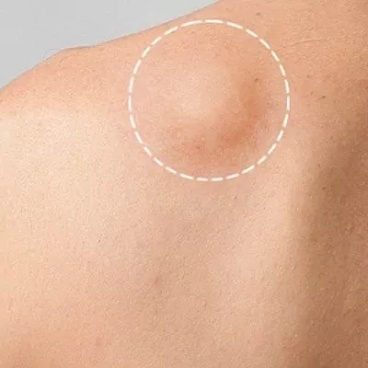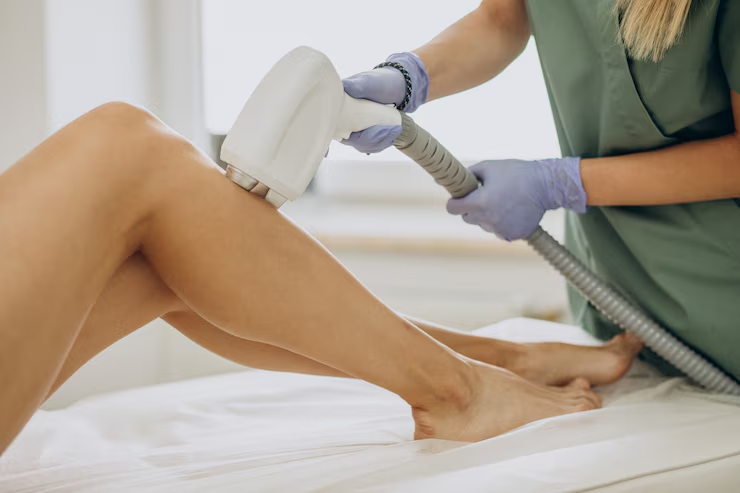Effective Lipoma Treatment: Discover Your Options Today
Lipomas, the most common form of soft tissue tumors, are benign (non-cancerous) growths made up of fat cells. They usually appear as soft, movable lumps under the skin and can occur anywhere on the body, although they are most commonly found on the back, shoulders, and arms. While lipomas are generally harmless and often asymptomatic, many individuals seek treatment for cosmetic reasons or if the lipoma becomes painful or bothersome. This article will explore effective Lipoma Treatment in Dubai options, highlighting various approaches without mentioning specific clinics or costs.
Understanding Lipomas
What Are Lipomas?
Lipomas are characterized by their soft, rubbery texture and are typically painless. They can vary in size, ranging from a few millimeters to several centimeters in diameter. Lipomas are generally slow-growing and do not pose serious health risks; however, they can sometimes cause discomfort or interfere with movement if they grow near nerves or muscles.
Causes and Risk Factors
The exact cause of lipoma formation is not fully understood, but certain factors may contribute to their development, including:
- Genetics: A family history of lipomas increases the likelihood of developing them.
- Age: Lipomas are most commonly found in adults, typically between the ages of 40 and 60.
- Obesity: While lipomas can occur in individuals of any weight, some studies suggest that obesity may be associated with a higher prevalence of these growths.
Symptoms
Most lipomas are asymptomatic and do not require treatment. However, individuals may notice the following signs:
- A soft, movable lump beneath the skin.
- A gradual increase in size.
- Discomfort or pain if the lipoma compresses nearby structures.
Effective Lipoma Treatment Options
When it comes to treating lipomas, several options are available, depending on the individual’s preferences and the lipoma's characteristics. Here are some common approaches:
1. Observation
For many individuals, particularly those with small, painless lipomas, a wait-and-see approach may be the most appropriate option. Regular monitoring allows for tracking any changes in size or symptoms. If the lipoma remains unchanged and does not cause discomfort, intervention may not be necessary.
2. Surgical Removal
Surgical excision is the most common and definitive treatment for lipomas. This procedure involves:
- Local Anesthesia: The area around the lipoma is numbed to minimize discomfort.
- Incision: A small incision is made over the lipoma.
- Excision: The lipoma is carefully removed from the surrounding tissue.
- Closure: The incision is closed with sutures, and the area is dressed.
Surgical removal is typically recommended for lipomas that are painful, growing, or causing cosmetic concerns. The recovery period is usually short, with most individuals resuming normal activities within a few days.
3. Liposuction
Liposuction is a minimally invasive alternative to traditional surgical excision. This technique involves:
- Anesthesia: Local anesthesia is administered to ensure comfort during the procedure.
- Incision and Cannula Insertion: A small incision is made, and a thin tube (cannula) is inserted into the lipoma.
- Fat Removal: The fatty tissue is suctioned out through the cannula.
While liposuction can effectively remove the lipoma, it may not be suitable for all types, particularly larger ones. Additionally, there is a risk of lipoma recurrence with this method.
4. Injection Therapy
Recent studies have explored the use of corticosteroid injections as a non-surgical treatment for lipomas. This approach involves:
- Corticosteroid Injection: A corticosteroid solution is injected directly into the lipoma.
- Reduction in Size: The medication aims to reduce inflammation and shrink the lipoma over time.
While injection therapy may be effective for some individuals, it may not lead to complete resolution of the lipoma and is generally considered less effective than surgical options.
5. Alternative Treatments
Several alternative treatments are sometimes considered for lipoma management, although scientific evidence supporting their efficacy is limited. These approaches may include:
Home Remedies: Some individuals report success with natural remedies, such as applying apple cider vinegar, turmeric, or flaxseed oil topically. However, it’s essential to consult with a healthcare professional before trying any home remedies.
Dietary Changes: A balanced diet rich in antioxidants, omega-3 fatty acids, and fiber may support overall health and potentially help reduce the size of lipomas. Foods such as fruits, vegetables, fish, and whole grains are beneficial.
Herbal Remedies: Certain herbs, like dandelion root and burdock root, are believed to support fat metabolism and may be considered by some individuals. However, their effectiveness for lipomas is not well-documented.
6. Lifestyle Modifications
Adopting a healthy lifestyle can play a role in managing lipomas and overall well-being. Consider the following strategies:
Regular Exercise: Engaging in physical activity can help maintain a healthy weight and improve circulation. Aim for at least 150 minutes of moderate-intensity exercise each week.
Balanced Diet: Incorporate nutrient-rich foods and limit processed foods high in sugars and unhealthy fats. A diet rich in fruits, vegetables, whole grains, and lean proteins may help manage body fat.
Hydration: Drinking plenty of water supports overall health and aids in detoxification. Aim for at least eight glasses of water daily.
Stress Management: Chronic stress can impact overall health, so consider practicing relaxation techniques such as yoga, meditation, or deep breathing exercises.
When to Seek Treatment
While lipomas are generally harmless, certain situations warrant seeking medical advice:
Rapid Growth: If a lipoma grows quickly or changes in appearance, consult a healthcare professional to rule out other conditions.
Pain or Discomfort: If the lipoma causes pain, tenderness, or discomfort, consider discussing treatment options.
Cosmetic Concerns: If the appearance of a lipoma affects self-esteem or confidence, explore treatment options to improve its aesthetic appearance.
Conclusion
Lipomas are common benign growths that often do not require treatment unless they cause discomfort or concern. When intervention is necessary, options range from surgical excision to liposuction and injection therapy. Alternative treatments and lifestyle modifications may also play a role in managing lipomas.
As with any medical condition, it’s essential to consult a healthcare professional for personalized advice and treatment recommendations. With the right approach, individuals can effectively manage lipomas and maintain their overall health and well-being.




Comments
Post a Comment